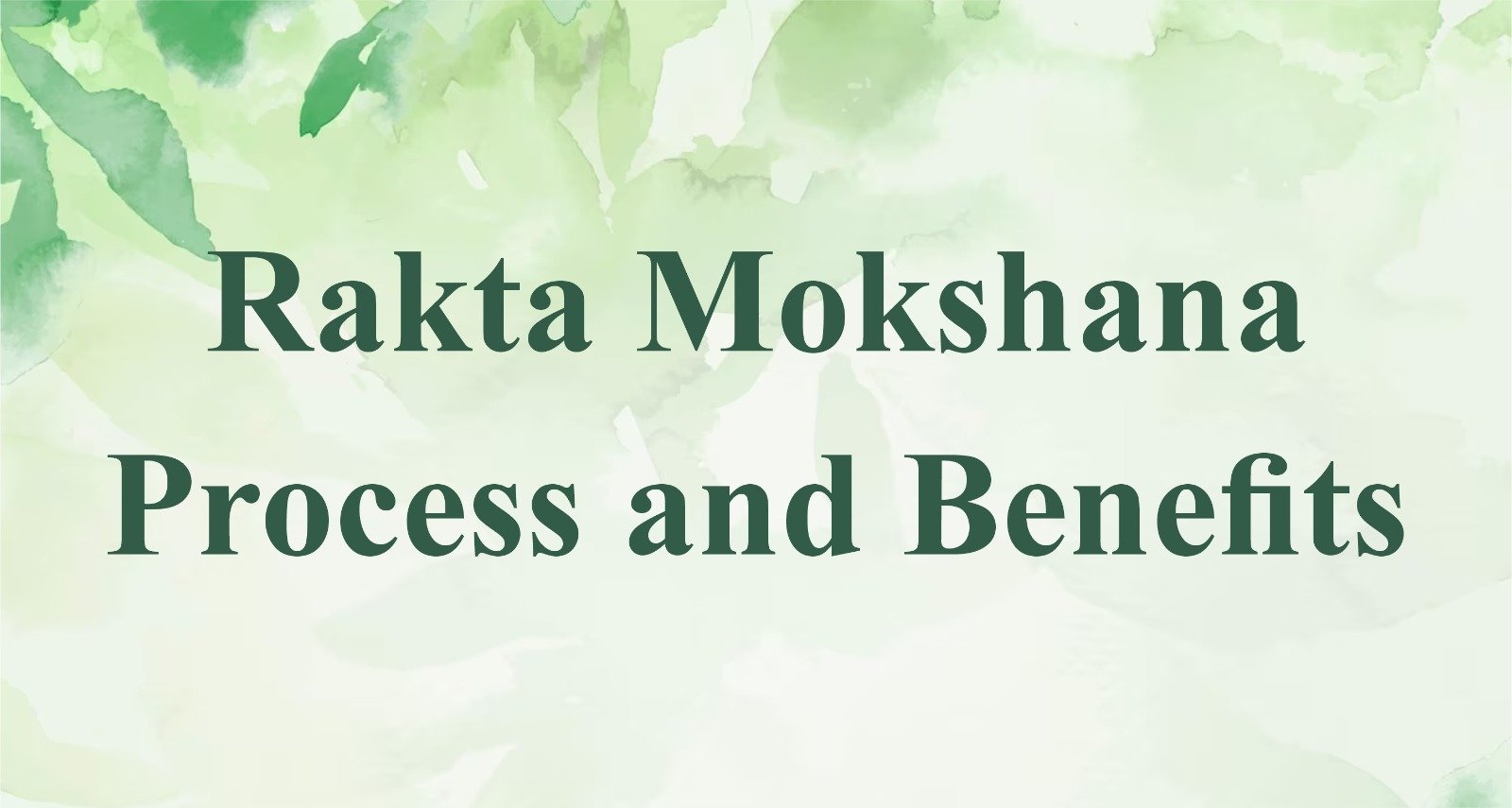Ayurveda, the ancient system of holistic healing originating from India, encompasses a rich array of therapies designed to promote overall well-being. Among these, Rakta Mokshana stands out as a unique and specialized procedure focused on blood purification. In Ayurveda, it is believed that the quality of blood directly influences one’s health, and Rakta Mokshana is considered an essential therapy to cleanse and rejuvenate the bloodstream.
Definition of Rakta Mokshana

Rakta Mokshana, often referred to as bloodletting or blood detoxification, is an Ayurvedic therapy aimed at eliminating impurities from the blood. This traditional practice is deeply rooted in the belief that a healthy balance of bodily humors, known as doshas, is essential for maintaining optimal health. Rakta Mokshana specifically targets the purification of Rakta Dhatu, or blood tissue, to prevent and alleviate various health conditions.
Methods of Rakta Mokshana
Ayurveda offers several methods for Rakta Mokshana, each tailored to individual needs and doshic imbalances. The two primary methods are:
- Siravedha (Venesection): This involves the controlled removal of a small quantity of blood from the veins, performed under the supervision of a skilled Ayurvedic practitioner. The bloodletting is typically done from specific marma points or energy centers to ensure minimal discomfort and maximum therapeutic benefits.
- Prachhana (Bloodletting with Leeches): Leech therapy has been a part of Ayurveda for centuries. The saliva of medicinal leeches contains enzymes that have anticoagulant and anti-inflammatory properties. When applied to specific areas of the body, leeches help draw out impure blood, facilitating the purification process.
Indications for Rakta Mokshana
Rakta Mokshana is recommended for various conditions and imbalances in the body, including:
- Skin disorders: Psoriasis, eczema, and other skin conditions often stem from impurities in the blood.
- Chronic infections: Rakta Mokshana can help in conditions where toxins are circulating in the bloodstream, leading to recurrent infections.
- Hypertension: By reducing the volume and thickness of the blood, this therapy can contribute to managing high blood pressure.
- Autoimmune disorders: Conditions like rheumatoid arthritis benefit from blood purification to alleviate symptoms and prevent flare-ups.
- Hair Loss: Conditions like hair loss and baldness can be treated by Rakta mokshana. In this, the impure blood can be removed and the blood becomes purified. Due to this the hair opens and grows. and hair loss stops
Benefits of Rakta Mokshana
- Improved circulation: Bloodletting helps enhance blood flow, ensuring that oxygen and nutrients reach every cell in the body efficiently.
- Toxin elimination: By removing impurities from the blood, Rakta Mokshana aids in detoxifying the body and preventing the accumulation of harmful substances.
- Enhanced immune function: Purified blood contributes to a stronger immune system, reducing susceptibility to infections and diseases.
- Skin health: Many skin conditions are rooted in blood impurities, and Rakta Mokshana can bring about visible improvements in skin health and complexion.
- Balanced doshas: Ayurveda emphasizes the importance of balanced doshas for overall well-being. Rakta Mokshana helps restore harmony among the doshas, promoting a state of equilibrium.
Precautions and Considerations
While Rakta Mokshana has numerous benefits, it is crucial to approach this therapy with caution. Only trained and experienced Ayurvedic practitioners should administer bloodletting procedures. Individuals with certain medical conditions, such as anemia or clotting disorders, may not be suitable candidates for this therapy.
Conclusion
Rakta Mokshana, with its roots deeply embedded in Ayurvedic wisdom, offers a holistic approach to blood purification. As an integral part of traditional healing, this therapy continues to be relevant in the modern world, providing a natural and effective means to maintain and restore health. As always, individuals considering Rakta Mokshana should consult with qualified Ayurvedic practitioners to determine its suitability for their specific health needs.
FAQs Related to Ayurveda
Frequently Asked Questions (FAQs) about Rakta Mokshana in Ayurveda
Q1. What is Rakta Mokshana?
Rakta Mokshana is an Ayurvedic therapy focused on blood purification. It involves the removal of impurities from the bloodstream to promote overall health and well-being.
Q2. How is Rakta Mokshana performed?
Rakta Mokshana can be performed through methods such as venesection (controlled bloodletting) or the application of leeches (prachhana). The choice of method depends on individual health conditions and doshic imbalances.
Q3. What are the indications for Rakta Mokshana?
This therapy is recommended for conditions such as skin disorders (psoriasis, eczema), chronic infections, hypertension, and autoimmune disorders where blood impurities play a role.
Q4. Are there different types of Rakta Mokshana?
Yes, the two primary methods are Siravedha (venesection) and Prachhana (bloodletting with leeches). Each method has its specific applications and benefits.
Q5. Is Rakta Mokshana painful?
The procedure is generally well-tolerated, and efforts are made to minimize discomfort. Skilled practitioners choose appropriate marma points or use leeches strategically to ensure a controlled and relatively painless experience.
Q6. How does Rakta Mokshana benefit the body?
Rakta Mokshana offers benefits such as improved circulation, toxin elimination, enhanced immune function, and balanced doshas. It contributes to overall detoxification and promotes a state of equilibrium in the body.
Q7. Who is a suitable candidate for Rakta Mokshana?
Individuals with specific health conditions or imbalances, such as skin disorders, chronic infections, or hypertension, may be suitable candidates. However, the therapy should only be administered by trained Ayurvedic practitioners after a thorough assessment.
Q8. Are there any precautions for Rakta Mokshana?
Yes, individuals with certain medical conditions like anemia or clotting disorders may not be suitable candidates. It is crucial to consult with a qualified Ayurvedic practitioner to determine the appropriateness of Rakta Mokshana for individual health needs.
Q9. How often should Rakta Mokshana be performed?
The frequency of Rakta Mokshana depends on individual health conditions and the recommendation of the Ayurvedic practitioner. It is not typically a daily practice and is usually done as part of a comprehensive Ayurvedic treatment plan.
Q10. Can Rakta Mokshana be done at home?
No, Rakta Mokshana should only be performed by trained and experienced Ayurvedic practitioners in a controlled and sterile environment. Attempting bloodletting procedures at home can lead to complications and is strongly discouraged.

